Kale cabbage and its cultivation

Today gardeners grow a wide variety of cabbage: both edible and decorative. But kale (kale), which is not only suitable for nutrition, but also has a pleasant appearance, is not yet very well known in our latitudes. But in breeding it is quite simple. By the way, kale is excellent for breeding all year round on a windowsill as a microgreen. This is the closest relative of the wild culture, which is still found in Greece and Italy. They began to cultivate it long ago, in the 5th century BC. NS. Leaves are eaten. The stem is tough and bitter in taste.
Origin
Kale is very similar to wild cabbage, however, its origin is still not determined reliably, although there is information that until the end of the Middle Ages, kale was one of the most widespread vegetable crops in Europe. At the beginning of the 19th century, Russian merchants brought it to Canada, and in the Second World War, due to its high nutritional density, they began to grow it on a large scale in England.
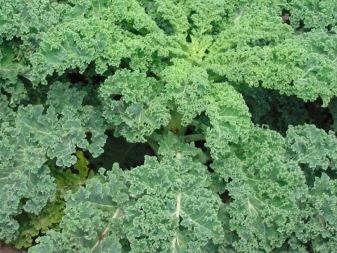
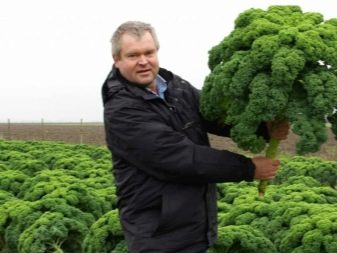
Description
This cabbage also has other names - gruncol, browncol or kale. This is an annual (some varieties of perennial) leafy vegetables, and it belongs to the Cabbage family. This is a vegetable that does not form a head of cabbage, in contrast to other types of cabbage. Kale leaves resemble curly lettuce leaves.
As we have already said, cabbage can be grown not only surrounded by vegetable crops, but also among ornamental plants. Its appearance is so diverse and unusual that it is sometimes difficult to determine what kind of plant it is. Smooth vertical stem is decorated with curly leaves. Their color can be very diverse. Dark green with a matte bloom, blue, purple, red, even pink: it depends entirely on the variety.
The plant gives off a light cabbage aroma. Surprisingly, this type of cabbage is able to compete with beef in nutritional value and protein content. Kale is nowadays positioned as a superfood. It combines a mixture of useful elements necessary for the body.
Nevertheless, an excess of certain minerals can provoke an exacerbation of chronic diseases. In this regard, succumbing to the general euphoria from the use of a fashionable product, take into account the characteristics of your own body.
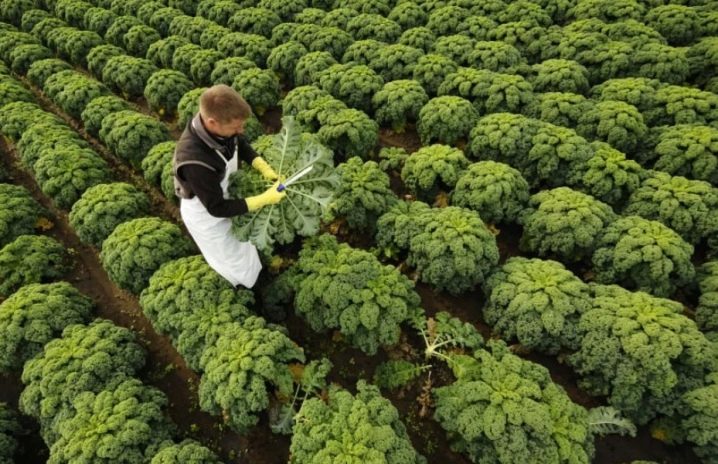
The characteristics of feces are as follows.
- Only leaves are eaten, the stem is always hard and tasteless.
- Harvesting is carried out several times over the summer: when some leaves are cut off, others appear in their place.
- In the southern regions, feces can be grown in the same garden for several years. After spending the winter under a film cover, she will give an early harvest of vitamin greens.
- Kale is in demand in cooking. Leaves are eaten raw, made from them salads and various dishes.
- 100 g contains 3.3 g of protein (half the daily requirement), 8 g of carbohydrates and 0.7 g of triglycerides. Energy value - 50 kcal per 100 g.
- High frost resistance is an added bonus. The plant is able to withstand frosts down to -15 degrees.
Cale is a storehouse of vitamins. The product is extremely low in calories and is easily digestible. It includes:
- vitamin C - 120 mg (cabbage contains 36 mg);
- calcium - 150 mg (milk - 130 mg);
- proteins - 4 g;
- saccharides - 9 g;
- 9 amino acids.
Along with this, the kale contains a large volume of sulforane, which inhibits the growth of bacteria, there is a natural inhibitor of cancer cells in the plant Indole-3-carbinol, glucoraphanin, which reduces the negative effect of carcinogens.
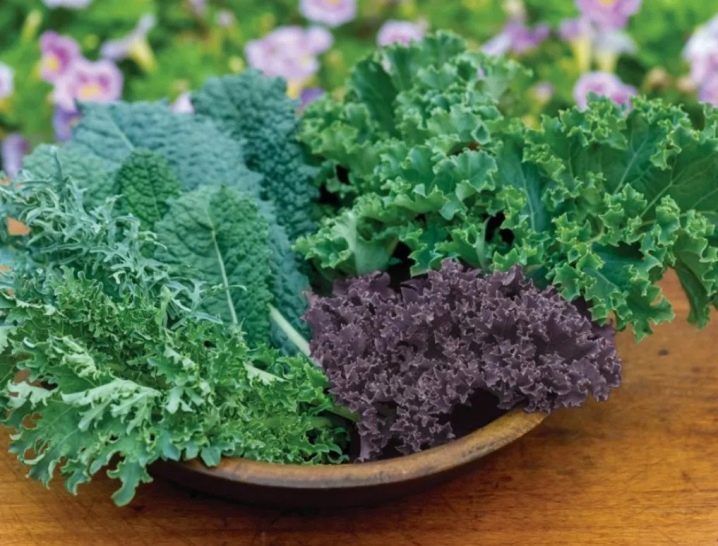
Types and varieties
There are many varieties of kale. Thanks to the activities of breeding specialists, various varietal species have been bred.
Keil is divided into groups according to the following species characteristics:
- structural features of the leaves: it is curly, wavy, fringed;
- leaf color: can be green, blue, red, purple;
- crop height: subdivided into small (up to 0.4 m), medium (0.4-0.9 m), tall (from a meter and above);
- ripening period: it can be early-ripening, mid-ripening, late-ripening.
Kale is characterized by an abundance of decorative species, which were obtained as a result of selection by Dutch and Japanese scientists. The Dutch have grown red and rose-leaved plants. The Japanese bred spherical kale varieties. Today you can buy varieties both for food and for giving an aesthetic basis to the garden.
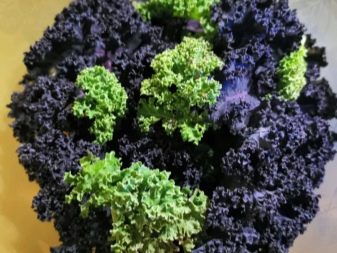
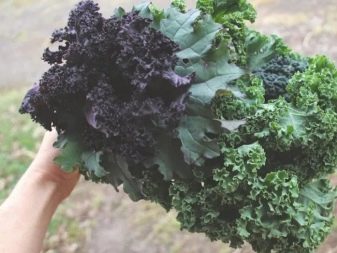
The following types and varieties of kale are popular in our country.
- Collard greens are especially common in 2 varieties: green and red. In the red, the pattern runs along the dark purple color of the leaves, which have a crimson tint. In terms of useful properties, the species is able to compete with red grape varieties: the culture has a lot of anthocyanins, flavonoids, antioxidants. The green look, which has emerald green openwork foliage, is also full of useful elements. Both samples are frost-resistant, they are not afraid of cold weather at -15 ° C. The growing season of the variety lasts 60-80 days.

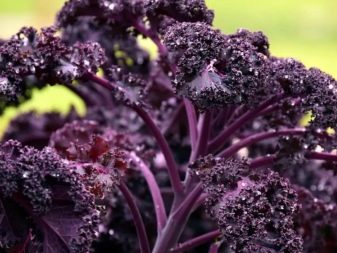
- Red Russian cabbage, which in American cities and Europe was called Red Russian, is distinguished by a net of frequent bright red veins on the surface of the lush greenery of openwork wrinkled leaves, which, as a result of frost, acquire a purple color. The variety is frost-resistant, not afraid of cold weather at -18 ° C. The variety is picky, does not need special care. The leaves are tender and slightly sweet in taste, there is a piquant aftertaste.
The variety can be used for food and as an element of a landscape project.
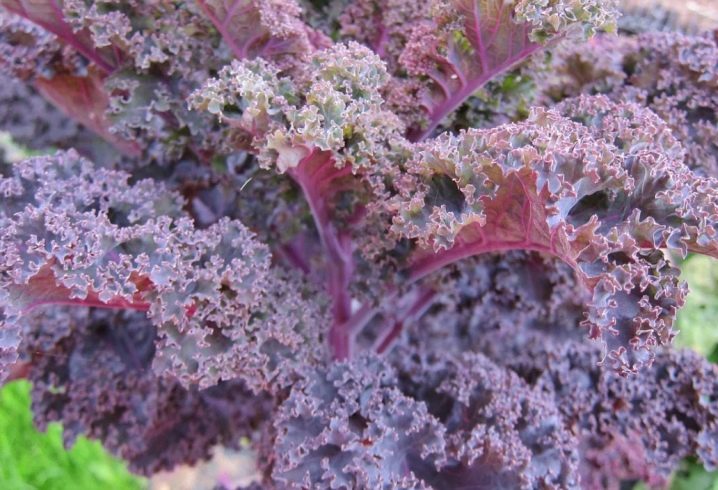
- Cabbage "Fitness" - the leader of proper nutrition. The variety has pimpled leaves of intense dark green color with a dark gray bloom. The leaves are delicious, juicy. It has a height of slightly more than 0.5 m. The growing season is approximately 3 months. The variety is undemanding to care. The culture is considered dietary due to the content of polyunsaturated fatty acids (PUFA) Omega-3, complete protein, vitamin cocktail. You can make a salad from tender leaves, the tougher ones should be stewed or fried, they can be an addition to stews, soups. The decorative properties of the variety make it possible to decorate a flower garden, a vegetable garden.
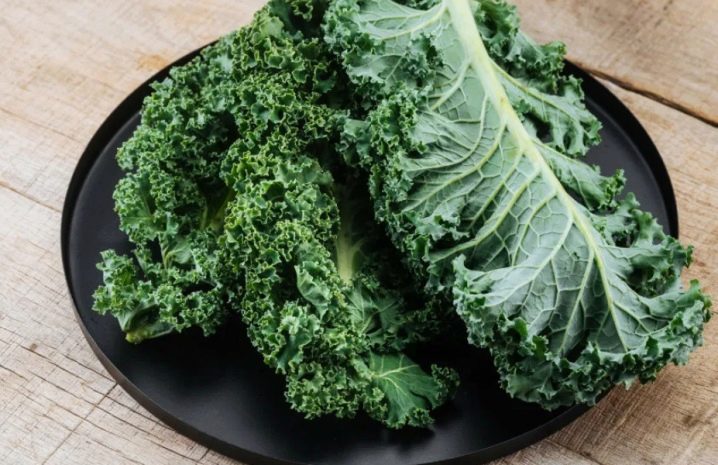
- Cabbage kale "Tuscany" has another name - Italian black kale. The vegetable stands out with dark green leaves with a bluish tint, which are characterized by firmness, elasticity, and an elongated shape. There are bubbles on the surface of the leaves. The foliage curls moderately and looks like a Savoyard crop. Tuscany is not afraid of frosts down to -15 ° C. The variety ripens within 2 months. Vegetable crops are distinguished by a high percentage of PUFAs. The body will also receive vitamin C, lutein. Italian black kale and cabbage are very similar in flavor.
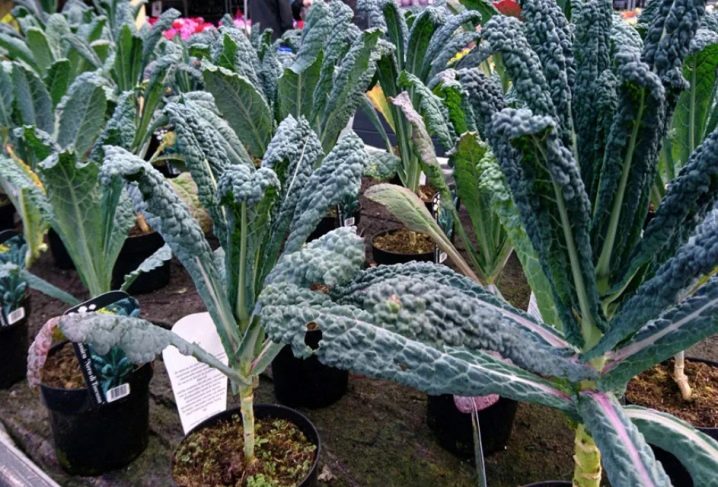
- Scarlett is a kale of the mid-early growing season. Her leaves change their color. The green color turns purple, the influence of the first frost transforms the leaves into a violet-blue.
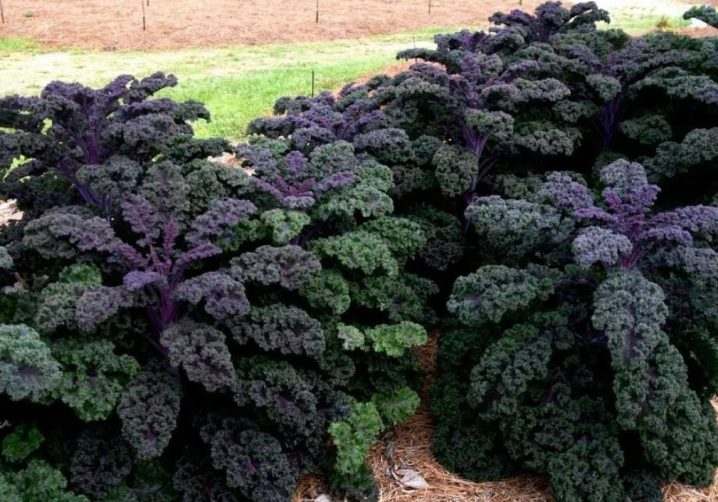
- Redbor is a hybrid variety. It resembles a maroon palm tree, has a height of 0.8-1.5 m. The stem is covered with dense curly leaves with excellent taste characteristics. The expressiveness of the external appearance of the culture makes it possible to practice the plant as a decorative one: "Redbor" is used in the design of the territory, flower beds are decorated with it.The variety is sun-loving, frost-resistant. At the first frost, the leaves become softer and juicier.
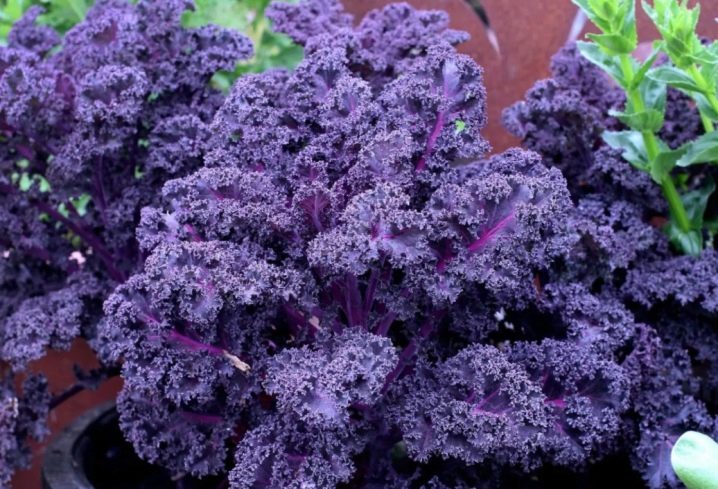
- Variety "Tintoretto" possesses light green leaves. It can be harvested for future use: frozen cabbage is full of aroma, sweetness.
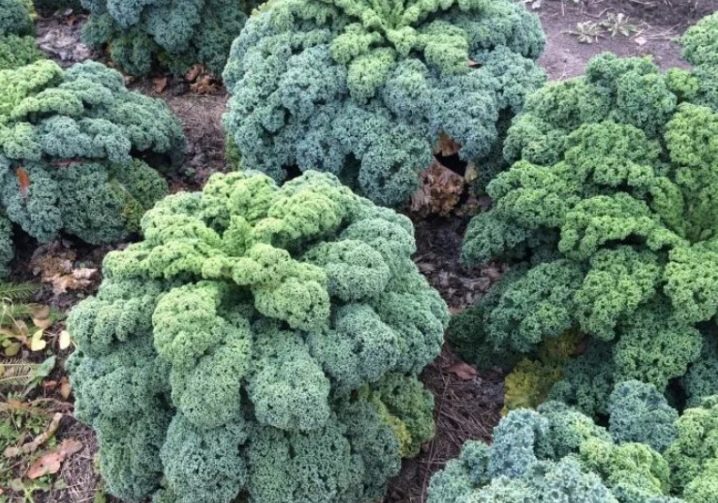
- Siberian variety it has a strong immunity and excellent frost resistance, the growing season lasts about 3 months, if the growing regions are the Urals, Siberia. The variety is in demand in Europe: the plant ripens earlier there. Frozen leaves become sweeter, more tender.
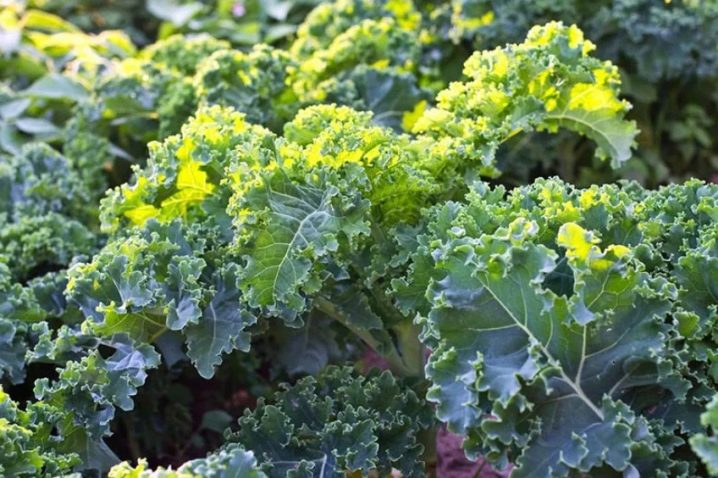
- Reed fecesreaching a height of 2 meters, the stem is characterized by hardness and strength. Green leaves have characteristic features: impressive length, corrugation. The vegetable is suitable for adding to exotic dishes, salads.

- Hybrid "Reflex" it is intensively used in different diets. Dark green wavy leaves with a pleasant taste are preferred by most nutritionists. Ripening time is about 3 months. The vegetable is able to grow up to 0.9 m. Differs in undemanding, productivity.
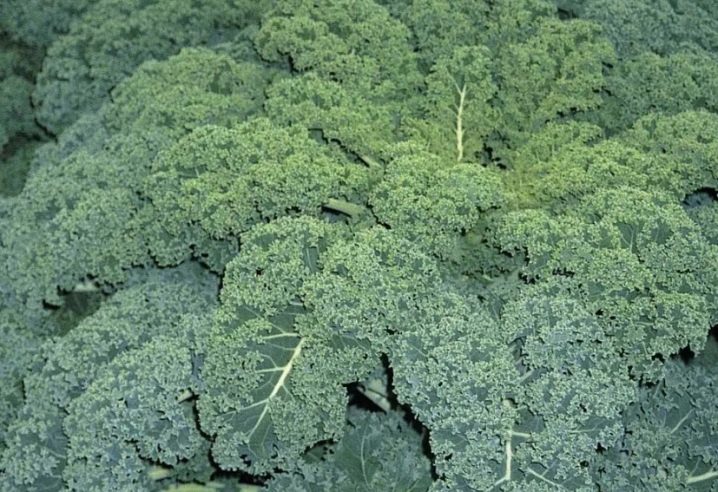
- At the "Cadet" curly and tender green leaves abundantly cover the entire bush. He is not afraid of low temperatures.
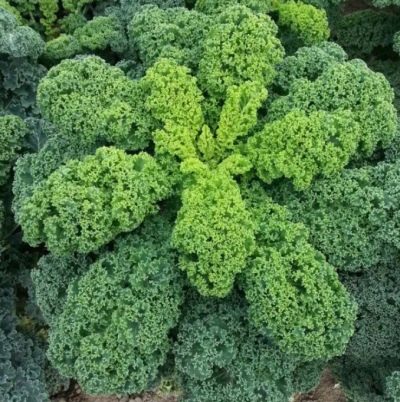
Landing
The cultivation of a vegetable crop is carried out by seedling method or by means of seeds.
Seedlings
After the threat of cold weather has passed, the cale is planted in open ground. Take strong plants with a height of about 10 cm and with 4 formed leaves. The land for them must already be thoroughly fertilized. The best predecessors are cucumbers, tomatoes, beans, beans. For planting seedlings, deep holes are made approximately the size of the plant itself (about 10 cm). The distance between the bushes is 40-50 cm. The bottom of the hole is covered with ash or humus.
Plants are placed exactly in a vertical position without deepening. After landing, the land is irrigated.
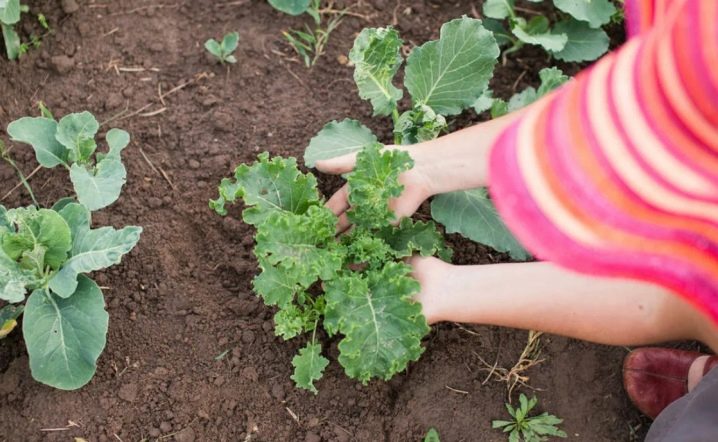
Seeds
Cabbage seed is sown in pits spaced at a distance of 30-40 cm between themselves and with a distance between rows of 45-55 cm. When planting seeds, as well as when transferring seedlings to open ground, 100 g of rotted organic waste and 200 g of ash are thrown into each hole, 3-5 seeds are thrown, irrigated and sprinkled with earth. After that, the bed is covered with a polyethylene film, fixing it along the contour so as not to be blown away by the wind. The sprouts will begin to break through after 5-7 days, and the shelter can be removed.
When examining the sprouts that have taken, it is worth removing the weak ones so that they do not interfere with the development of the stronger ones.
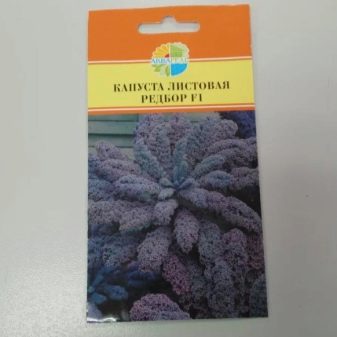
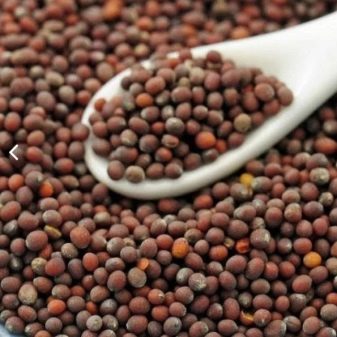
Growing care
Vegetable crops thrive at temperatures from +10 to + 20 ° C. It needs to be constantly irrigated. It is worth making furrows around the plant so that the water does not go to the sides, but reaches the roots. The frequency of watering depends on the climatic weather conditions. The main thing is that the ground is constantly wet. But stagnation of water is also unacceptable.
Once every 30 days, the plant needs organic feeding. For the first time, cabbage is fed with cow dung or chicken droppings immediately after it gains green mass. Subsequent feeding can be similar. Herbal infusion is useful for a vegetable: grass and weeds are infused in water in a ratio of 1: 10 for 1 to 3 weeks, until the foam disappears. Top dressing is carried out with an infusion diluted with water, the ratio is 1: 1. When feeding, it is important not to overdo it, otherwise the leaves will rot.
A vegetable that has grown to 20 cm must be spud. Weeding should be done as needed. The plant responds well to loosening, which means that it must be loosened constantly. In order to loosen and irrigate cabbage less often, the earth is mulched. Also, mulch protects the roots from rot. Rotted manure and compost are used as mulch.

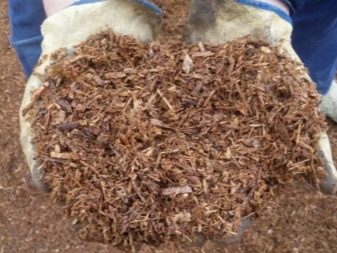
Diseases and pests
All types of cabbage are characterized by the same diseases. Modern hybrids are generally disease resistant. But as a preventive measure, it is necessary to constantly carry out procedures to increase the air permeability of the earth.Also, you cannot plant cabbage in the same place all the time.
For insects, such as cruciferous fleas or aphids, dusting with wood ash or tobacco dust is productive. However, rain removes the protective function of such agents and the treatment must be repeated. They also use infusion of onion peels, solutions of laundry soap, and acetic acid.
Since kale is a kale and is more commonly consumed raw, try not to get carried away with chemicals. When it is not possible to overcome pests with organic matter and standard agricultural technology, you can resort to:
- Kinmix;
- "Kemifos";
- "Sharpeyu";
- "Furyku";
- bitoxibacillin;
- Aliotu;
- "Bankoli" and other drugs.
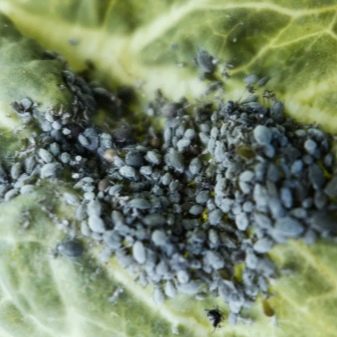

Harvesting and storage
When the plant grows up to 20 cm, you can harvest. The timing depends on the variety. It may take 55 to 90 days from the emerging sprouts to harvest. Cleaning takes place in two ways.
- Selective. Tear off young leaves. Those that are larger are plucked, the smaller leaves are kept. Soon they grow back, then the collection is resumed. Over time, the stem is exposed, the plant becomes similar to a small palm tree.
- Complete. Cut off all the bushes at once. Leave a stump of 4-6 centimeters in height. Gradually, young leaves are formed on it.
In areas with warm winters, cut kale cabbage, having successfully wintered, will delight you with vitamin greens in the spring. Leaves not torn off in time become bitter and rough.
After harvesting, the leaves are stored in the refrigerator if they are consumed fresh, or in the freezer (when placed in long-term storage). After freezing, the kale becomes especially tasty: the leaves will be fragrant, and the bitterness will completely disappear. They are kept in the refrigerator for no more than a week, and it is also necessary that they be in a bowl of water.
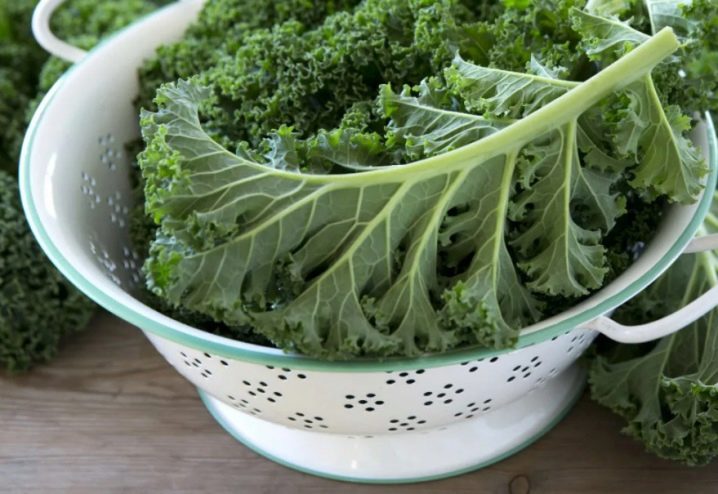













The comment was sent successfully.